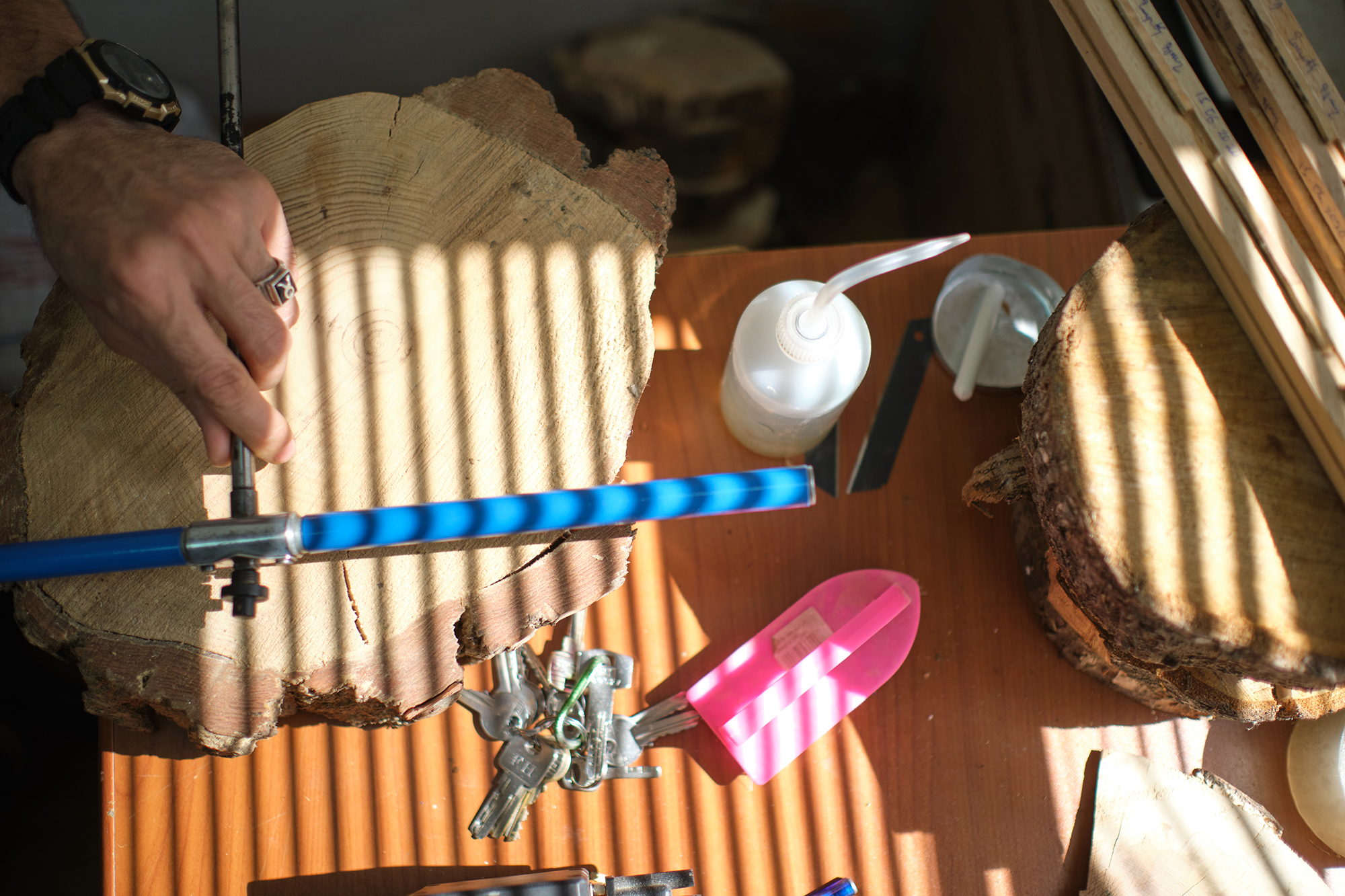Lintab microscope
People depend on forests from the air they breathe to the wood they use. Habitats for animals and livelihoods for humans, forests prevent soil erosion, even mitigate climate change. Yet people are still allowing them to disappear also because of illegal logging. Forests in Armenia are less than 11% of the territory, while the illegal logging is a crime with more than 10 cases reported monthly by the police. The “Lintab” - a microscope measuring tree rings – comes to check the time and place of illegal logging and support reforestation in Armenia.
No chance to illegal logging
“Every single tree is unique, and Lintab helps to read the tree encyclopedia”, says Tigran Hayrapetyan, one of two experts already using “Lintab” for dendro-chronometric criminology at the National Bureau of Expertise (NBE) of the National Academy of Sciences of Armenia.
While dendrochronology is a science studying the annual growth of rings of wood and has some roots dating back to the times of Leonardo da Vinci, it became part of criminology only lately. “Expertise discovers the information about the tree species, when and where the logging took place, how old is the tree, and was it viable at the moment of logging”, says Tigran Hayrapetyan.
This is important information to combat illegal logging as loggers can no longer justify their deals with one-time permission documents illegally used for many batches of wood. “Lintab” already helped to find the cheaters in 35 illegal logging cases: the experts have examined more than 800 samples sent for expertise and some 1000 samples taken for comparison. There are also more than 70 criminal cases waiting for “Lintab”-based final expertise.
During the expertise, the instrument helps to define when and where the tree was cut, was the tree viable at the time of cutting or not. “It is also essential to understand the vitality of the trees as in all criminal cases the damage to nature needs to be calculated”, says Tigran Hayrapetyan. “Specifically, in the capital we need to be sure whether a sanitary cutting took place or trees were illegally logged”.
Argam Hovsepyan, the Director of the NBE ensures that about 3 years ago, before “Lintab”, there was no way in Armenia to do similar expertise. Experts trained in Germany and Russia with the support of the UNDP project, provide solutions to the situations that were not possible to dispel before.
“Any excuse related to the cut trees can get its answer by using “Lintab” to say for sure whether the tree was cut yesterday or years ago”, says Argam Hovsepyan.
He is confident that “Lintab” provided by the UNDP “Sustainable Land and Forest Management” project has brought many opportunities by advancing the expertise. “We are glad there are directions where we are approached for helping others, presenting our experience to the international partners, and dendro-chronometric expertise became one of them”, says the Director of the NBE.
Want to know more?
The importance of “Lintab” in regard to the ecological and scientific research could not be overestimated. Argam Hovsepyan notes that “Lintab” also helps to define the specifics of growth of trees that are important for taking justified decisions of reforestation – which species where may grow better.
“Lintab” provides a wide range of scientific research opportunities - from climate change to archeology, reforestation planning to climatology. “The trunk of the tree has different layers from bark to the pith, in-between is the wood comprising huge amount of information whether fires or droughts, flood or cataclysms happened in the past”, explains Anna Petrosyan, another certified expert of the NBE with several years of work experience.
“A very gentle movement of your hand allows observing the sample with micron precision”, says Anna Petrosyan. She confesses that measuring tree rings with high precision and easy to handle instrument is way easy compared with the times when the age of trees was defined with millimeter papers and pencils with low precision and accuracy. It could have taken days while the core process with “Lintab” may take from 2 to 6 hours depending on tree rings’ clarity and condition.
The sample is taken with a drilling rig to have drilling cores of 4-5mm diameter and 10-15sm length. “And it tells whole stories about the tree, the forest, the place and its climate”, says Anna Petrosyan adding: “Even though sometimes illegal loggers try to destroy the stumps, burn it or pour oil, “Lintab” does it job even if something from the stump its left."
* The GEF-funded and UNDP-implemented “Mainstreaming Sustainable Land and Forest Management in Mountain Landscapes of North-Eastern Armenia” project is conducted in close partnership with RA Ministry of Environment and its “Hayantar” SNCO. The target area of the project, Lori and Tavush regions, contains 65 percent of Armenia’s forest resources and provides essential ecosystem services including water provision (for urban use and food production), landslide control and carbon storage and sequestration. The main cause of land and forest degradation in these regions is the deforestation and overexploitation of forest resources.

 Locations
Locations


